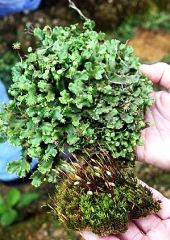Tuesday February 20, 2007
WHEN Tai Teck Boon was a young boy growing up in Cameron Highlands, he witnessed constant deforestation for vegetable farms and other development projects. He saw huge ancient trees brought down together with many wild, epiphytic plants such as orchids.
“It was such a pity to let the orchids die just like that. So, I took them back and grew them,” recalls the 60-year-old from Brinchang. His hobby later turned into a business and he has been running a nursery for 40 years selling mainly montane plants.
Unwittingly, Tai has rescued many plants from possible extinction, such as the one that Dutch orchidologist Dr Jaap Vermeulen described as Bulbophyllum ochthodes.
Over the years, Tai’s wild collections have grown into a treasure trove of rare and endangered species that attract researchers and enthusiasts, locals as well as foreign. He readily allows scientists like those working on the Flora of Peninsular Malaysia project access to his collections.
Project director Dr Saw Leng Guan admits that collaborating with nursery operators can be a “tricky” undertaking as a bona fide scientist would not want to be seen as endorsing such commercial activity. However, given the difficulties in obtaining certain rare plants, he says researchers have to work with private collectors.
Tai insists that he is not breaking any laws because he merely picked up ”discards”. His nursery was previously raided by Department of Forestry staff when word about his huge collection of wild plants got around but the enforcers did not find any incriminating evidence.
Saw says enforcement is hampered by the absence of laws. “Unlike the Protection of Wildlife Act that protects fauna species, our flora species are largely unprotected. Until we get our act together, the loophole will be exploited.”
 Forest beauty: A herbaceous plant that thrives in the understorey of tropical forests and on slopes in the montane jungle of our highlands.
Forest beauty: A herbaceous plant that thrives in the understorey of tropical forests and on slopes in the montane jungle of our highlands.Clearing of forests requires a licence from state forestry departments but it is silent on non-timber products extracted from the concession. There is indication that illegal collections do occur in Cameron Highlands for high value species such as orchids, either for personal collections or nurseries that cater to overseas collectors.
Tai, however, might be a different sort of collector – he does not to hide his collection and is willing to share them. Given his vast experience in dealing with plants, he is assisting in the setting up of the Montane Flora Conservatory under the Cameron Highlands Montane Park project – a collaboration between Forest Research Institute of Malaysia and Pahang Forestry Department.
The conservatory at Brinchang aims to be the central depository for montane species in an effort to preserve them for conservation, research and education. It houses collections from Frasers Hill, Gunung Jerai and Cameron Highlands and will soon be opened to the public.
- The Star.



No comments:
Post a Comment